All Of Your Rugby Jersey Questions Answered!
Rugby jerseys come in all shapes, sizes, colors and designs. And they continue to change and adapt to not only the fashion trends of players but also performance requirements. In this article we are going to answer all of the most common questions people have about rugby jerseys. Let’s get started!
Do Rugby Players Swap Jerseys?
Rugby players do regularly swap jerseys after a game. This tradition is common after international games. Rugby players receive 2 jerseys so they can swap one and keep the other.
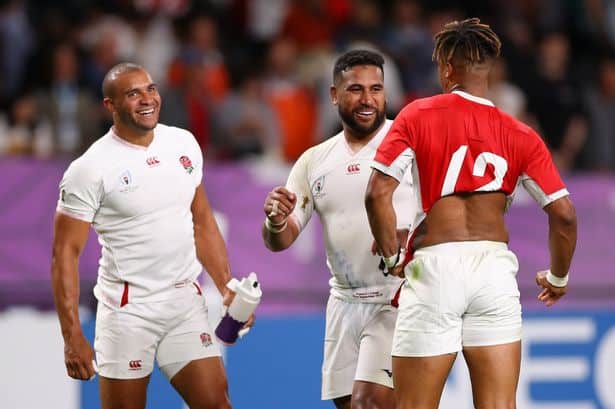
In rugby there is a great tradition where players will swap jerseys at the end of a match.
Swapping rugby jerseys is a nice display of sportsmanship as both teams can appreciate each other by honoring their opponent’s jersey.
Swapping rugby jerseys is also a great way to create a memento and to ensure a rugby player never forgets the game they played. Many rugby jerseys get their swapped jerseys framed and keep them in their homes.
If rugby players manage to swap their jersey with a particularly famous player the jersey can become a collectible and quickly rise in price. Some player’s rugby shirts are worth thousands!
What Is O2 On The England Rugby Jersey?
The O2 on the England rugby jersey is the English team’s chief sponsor. O2 is the second largest telecommunications company in the UK and first sponsored the English side in 1995.
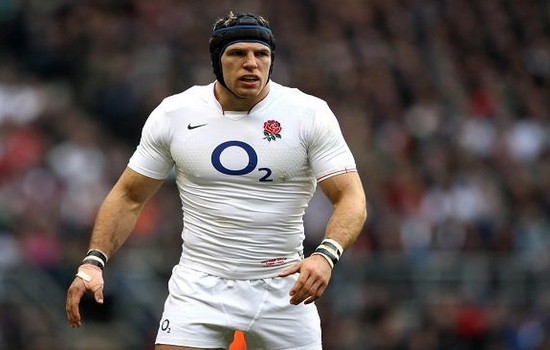
Have you noticed the huge O2 sign plastered over the England rugby jersey? This is the logo of the English rugby team’s number 1 sponsor, O2.
O2 is Britain’s second largest telco firm and have been sponsoring the English rugby team for 25 years.
O2’s sponsorship deal with English rugby is currently worth 7.5 million pounds ($9.5 million) per year. O2, recently extended their partnership with England rugby, so you can expect to see the O2 logo on the English jerseys (both women’s and men’s) for many years to come.
The O2 logo on the English rugby jersey is a little controversial as it is so large. Many fans think it is just apart of the design of the rugby shirt.
Many other rugby teams opt for slightly smaller brand logos. But the O2 logo does flow quite nicely with the English rugby shirt and does not look out of place.
Why Is There No Player Name On Rugby Jerseys?
Rugby jerseys do not have the players’ names on them because rugby always put the emphasis on the team rather than the individual. Worshiping individual players has always been against rugby’s code of sportsmanship.

Since the beginning of the sport, rugby has adhered to an unwritten code surrounding sportsmanship.
One of those codes is related to a focus on the rugby team rather than individual star players.
When a rugby team wins it is because the team as a whole successfully overcame challenges. It is not the result of star performances from certain players.
Like wise when a rugby team fails to win the blame has to be passed equally among players. No single player can be scapegoated and it is the entire teams fault.
This rugby philosophy of emphasizing the collective over the individual is also the reason you won’t find players’ names on the back of the jerseys.
Rugby has always been against raising certain players above others and by removing names, this is one way they try to get fans to cheer for the team rather than superstar rugby athletes.
Are Rugby Jerseys Tight?
Rugby jerseys are now very tight and made of form fitting polyester. Rugby jerseys are tight to increase players’ speed, dry quickly in wet weather and also to prevent defenders holding onto jerseys when making tackles.
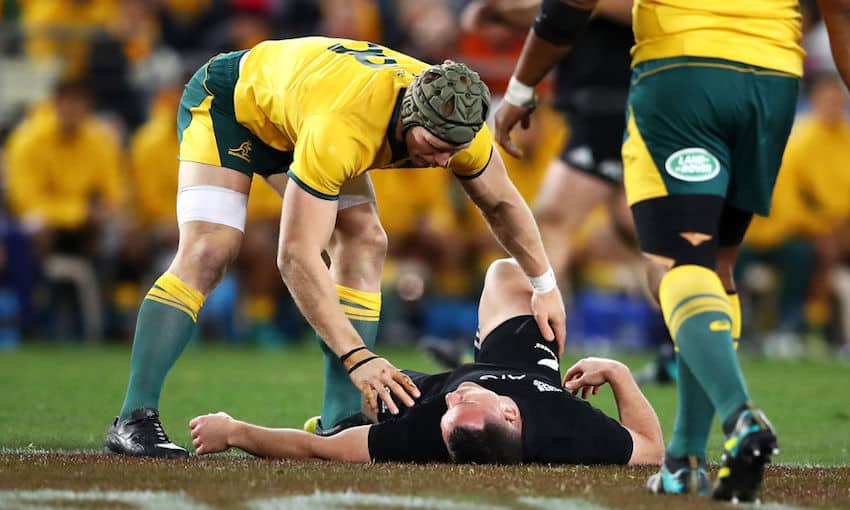
If you grew up watching rugby in the 90s or earlier you may remember old school jerseys which were made of thick cotton, had long sleeves and were loose.
Nowadays loose and long sleeve rugby jerseys are only found in shopping malls and are made by brands like Ralph Lauren.
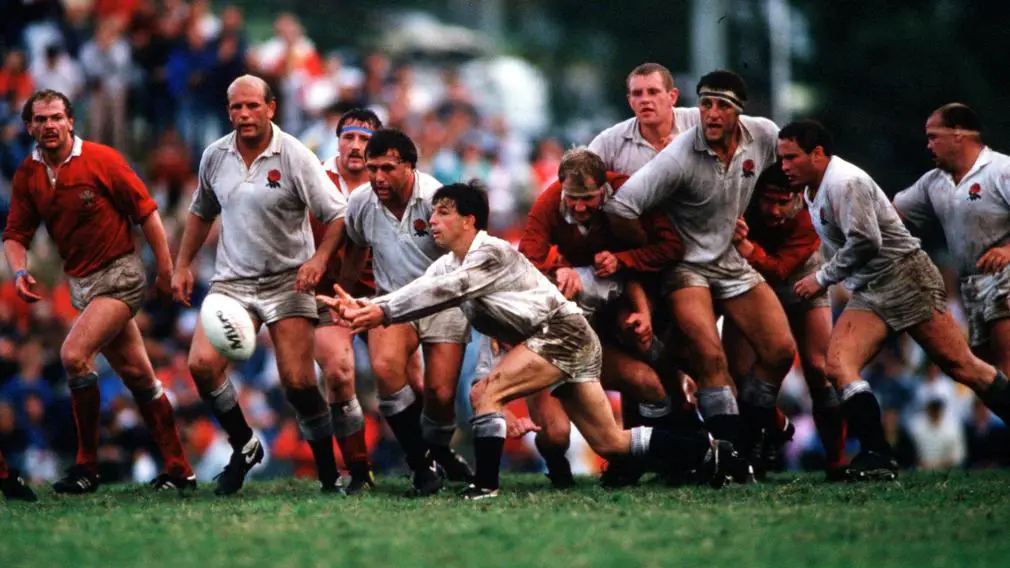
The English rugby team were the first side to introduce tight rugby jerseys. England’s rugby team was looking for an advantage and decided to try out a tight fitting design by Nike, made from synthetic materials and with no collar.
These newly designed tight rugby jerseys proved a big hit with the English players. They felt they could run faster and didn’t have to worry about opposing players tackling them by grabbing their rugby shirts.
Soon all rugby teams took England’s lead and now wear tight rugby jerseys, with short sleeves and made from polyester.

What Is The Lump On The Back Of A Rugby Jersey?
The lump on the back of a rugby jersey is a GPS tracker. Rugby teams use these trackers to record how far a player ran, their average and top speed and how much of the game they spent walking.
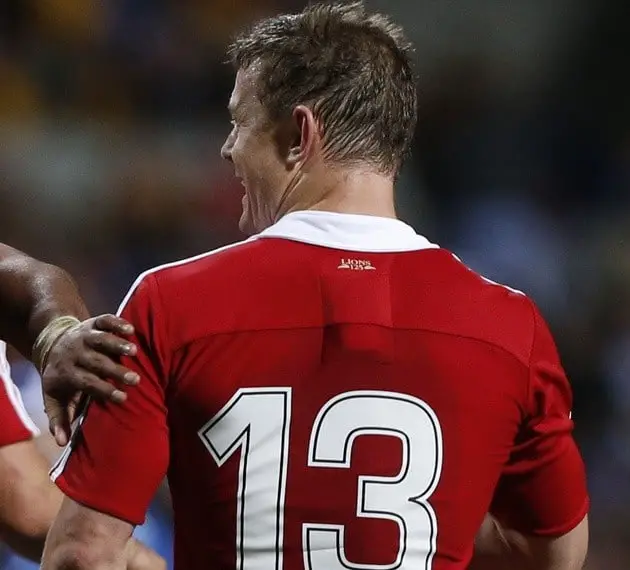
As rugby has entered the professional era teams are looking for new ways to improve their performance. One way rugby teams have been attempting to get an edge over their competition is through the use of sports analytics.
With sports analytics rugby teams record players’ statistics and compare them with benchmarks and previous results.
Rugby players who are not improving or meeting benchmarks are then analyzed further to identify the problem and see if they need extra training, to change their diet, supplementation or even get injuries fixed.
One common way rugby teams use sports analytics is through placing GPS trackers in the back of players’ rugby jerseys.
These GPS trackers tell a rugby team how far a player ran in a game, the speeds they ran, top speed, average speed and how much time they spent walking.
Data analysts will then take this GPS data and compare it to the benchmarks they and have and compare it to a player’s previous results.
If a player’s speed and total distance is significantly down this is often a good sign that there is something wrong with the player.
How Do You Stretch A Rugby Jersey?
To stretch a rugby jersey fill your sink with warm water and place a tablespoon of hair conditioner and mix. Then put your rugby jersey in the water for 20 minutes. Wring the rugby jersey and then start stretching the rugby shirt until it is your correct size.
What Happens To Rugby Shirts After A Game?
After a game rugby shirts are often donated to charities, kept by players as a memento, given away to fans or opposing players or even reused for next week’s game!
Rugby jerseys follow a varied path at the end of a rugby match. Some rugby shirts are sent directly to the equipment manager who ensures they are washed and ready to be used in next week’s match.
However, many rugby jerseys are only used once. These jerseys are often swapped with the opposing team, kept by players, given to fans or handed out to charities. Charities then sell these rugby shirts during auctions and are able to raise substantial funds
